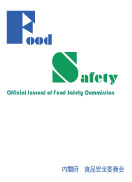Campylobacter food poisoning is one of the major bacterial foodborne diseases resulting in numerous outbreaks worldwide. Particularly in Japan, one-fourth of the total food poisoning is caused by Campylobacter jejuni/coli. Raw and/or undercooked poultry meat and meat products are known as the main cause of campylobacteriosis. Consequently, effective and immediate actions are needed to eliminate or at least reduce campylobacteriosis. This study aimed at examining the Japanese food regulation system, comparing it with those in the USA and Australia, and making necessary recommendations for a better control of campylobacteriosis in Japan. The study was conducted by a thorough investigation of published literatures, governmental documents, statistical and epidemiological data and public information. The results led to recommendations that the Japanese food regulation authority should consider the following suggestions in order to control campylobacteriosis: 1) assess the Campylobacter safety at the end of processing stage of chicken supply chain based on risk assessment using quantitative/qualitative baseline data collected over Japan, 2) establish a national Campylobacter strategy, including specific campylobacteriosis reduction goals and criteria, and 3) provide the small food business operators with sufficient training and support to implement a Hazard Analysis Critical Control Points (HACCP) as an obligatory food safety requirement. It is acknowledged that it would be difficult to apply foreign regulations directly to Japanese food regulation system due to differences in food culture, regulation, industry structure, and data collection systems. Thus, flexible application is required. Finding and conducting effective Campylobacter control measures can decrease contaminated live birds and chicken meat in Japan, home to a unique food culture of eating raw and/or undercooked chicken meat called Torisashi such as sashimi, tataki and yubiki chicken. Consequently, potentially available research data may be instrumental in finding solutions for reducing campylobacteriosis. Eliminating Campylobacter food poisoning cases in Japan will be a significant achievement in ensuring Japanese and global food safety.
抄録全体を表示
